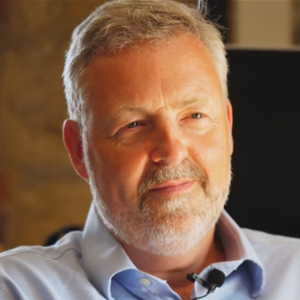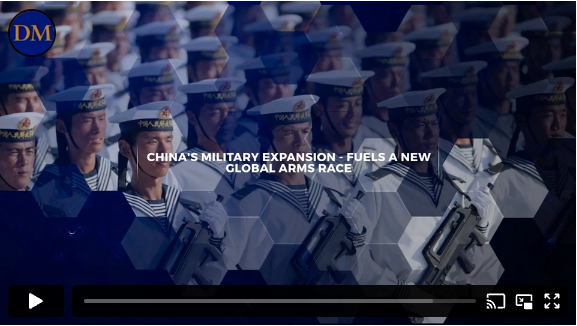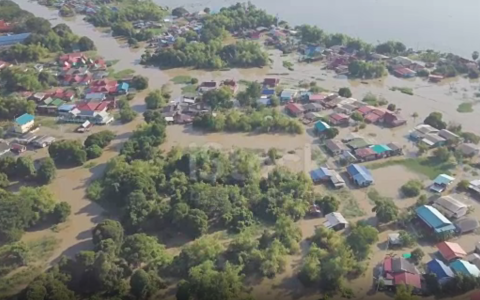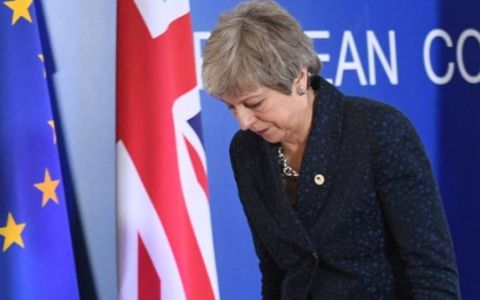David Murrin began his unique career in the oil exploration business amongst the jungles of Papua New Guinea and the southwestern Pacific islands. There, he engaged with the numerous tribes of the Sepik River, exploring the mineral composition of the region. Before the age of adventure tourism, this region was highly dangerous, very uncertain and local indigenous groups were often hostile and cannibalistic. David's work with the PNG tribespeople catalysed his theories on collective human behaviour.
In the early 1980s, David embarked on a new career, joining JP Morgan in London. Watching his colleges on the trading floors, he quickly identified modern society also behaved collectively. He was sent to New York on JPM’s highly rated internal MBA equivalent finance programme. Once back in London, he traded FX, bonds, equities and commodities on JPM’s first European Prop desk. In 1991, he founded and managed JPM’s highly successful European Market Analysis Group, developing new behavioural investment techniques which were utilised to deploy and manage risk at the highest level of the bank.
In 1993, David founded his first hedge fund, Apollo Asset Management, and, in 1997, co-founded Emergent Asset Management as CIO. His primary role was overseeing trading across all fund products as well as being particularly active in the firm’s private equity business. He co-founded Emvest, Emergent’s African land fund, in 2008 and acted as its Chairman until its sale from the group in 2011. In addition, through Emergent’s Advisory Business, David was responsible for the critical fund-raising for Heritage Oil, allowing it to expand significantly by investing in its Uganda exploration programme. He took full control of Emergent in 2011, combining his management of the Geomacro fund with the role of Chief Executive Officer until 2014.
David has been described as a polymath and his career of more than three decades has been focused on finding and understanding collective human behavioural patterns including deep-seated ‘patterns’ in history and Dyslexic Strategic Thinking. Then using them to try and predict the future for geopolitics and markets in today’s turbulent times. He has a remarkable track record.
David’s advisory and future trends speaking is based on his direct investment experience combined with a framework that can be used to explain and qualify decisions within an investment team, aid risk assessment and reduce biases in collective investment decisions.
Since his early thirties David has owned and raced the famous classic racing yacht Cetewayo. The vessel is occasionally used as part of senior management team strategy days as part of David's leadership programme.
David is a keen racing and classic yachtsman, co-founding the British Classic Yacht Club in 2002 which has grown over the past decade into a substantial organisation. He was the Vice Commodore and then Commodore of the Club, resigning in 2019. Visit Zulu Yachting for more information.
In the desire to share his observations and predictive constructs, David has written four books.
Breaking the Code of History recognised that post 9/11, the world changed in an instant. Using his theories of human social structures, David was able to successfully predict back in 2007 the key process in human social structures that have impacted today’s changing world, including the decline of America and the West and the rise of China, and the reality of climate change.
His second book, released in 2018, is Lions Led By Lions which examines Britain’s misunderstood involvement in the First World War and the achieved learning curve of its Army's leadership that resulted in a war-winning British Expeditionary Force rolling back the German Army in 1918. The story provides clear lessons that should be applied by today's leaders concerning the deterrence of global conflict.
David's third book is a call to arms, in which his Now or Never UK Defense Review highlights the clear and present threats faced by Britain in the years and decade ahead from Russia and especially China, and the urgency for the need for large-scale rearmament to secure the future peace.
David's latest book Red Lightning integrates fact and fiction and describes from a future perspective how China wins WWIII in 2025. It is a sober warning to the leaders of the Western world that peace will only be maintained by a hard-won deterrence of aggression.
Extended version
Theories Predictions Aspirations Feedback
Extended Biography
David Paul Murrin
Born: April 27, 1963 London, UK
Nationality: British
Education
Weydon Comprehensive
Farnham Sixth Form College
University of Exeter
Occupations
- Seismologist
- Banker
- Hedge fund CIO
- Entrepreneur
- Thought leader
- Author
- Speaker
Employers
- Seismograph Service Limited 1984-86
- JP Morgan 1986-93
- Apollo Asset Management 1993-96
- Emergent Asset Management 1996-present
Known For
- Founder of JP Morgan’s Market Analysis Group
- Co-founder and CIO of Emergent Asset Management
- Co-founder and Chairman of EMVest
- Co-founder of British Classic Yacht Club
- Author of Breaking the Code of History
- Theories on The Physics of Humanity and Human Systems
David Murrin is often described as a polymath, and is well known for his bold predictions on geopolitics and markets. These are driven by his theories on human systems, which he describes as the study of the physics of humanity.
Education and early life
Murrin was brought up in Farnham, Surrey, by his parents Dennis and June Murrin, along with his younger brother Ian. He was educated in the state school system and attended local state schools, where he was diagnosed as dyslexic at age 11. He went on to attend Weydon Comprehensive (in the first year of its transition from a secondary school) and then Farnham Sixth Form College, studying maths, physics and chemistry.
He grew up sailing European waters in his family’s 25ft Harrison Butler yacht. He was also exposed to international travel and overseas visitors, as a result of his father’s profession as an aeronautical engineer and head of the Airworthiness Division at the Civil Aviation Authority. One of Murrin’s earliest fascinations, which continues to this day, was with warfare past and present. This naturally included aviation, thanks to his father, and also his uncle, who had flown 80 missions in RAF bomber command.
Murrin was an avid sportsman from the earliest age, taking part in swimming, racket sports, rugby and martial arts. He started judo aged 5, the beginning of a four-decade relationship with martial arts and Asian philosophies. He also learnt to windsurf aged 12, when the sport was still new, and became the country’s youngest windsurfing instructor at 14, also racing on the national youth and university teams. At school he showed artistic and practical talent, but those subjects were sacrificed for more academic subjects. His dyslexia proved a major handicap into mid-life, until the arrival of spell checkers.
He attended the University of Exeter to study physics and geophysics, and found the first year challenging. However, by the end of his second year, certain key patterns were starting to connect and the constructs of the various components of the world of physics began to make sense. This was further driven by his enthusiasm for the geo/stellar parts of the course, where real-time applications of the laws of physics were in evidence. Only much later in life did Murrin realise that he had been applying his dyslexic pattern recognition approach to breaking the code of physics. Something that he would come to define as a holographic construct of interconnected data points. He called this the ‘Learn to Learn’ programme, a method he believes is typical of lateral thinkers, often manifesting as later development in the educational system. He would later harness this lateral dyslexic thinking in his financial career to create outstanding returns, and to postulate his theories of human systems.
After achieving a 2:1 Honours degree in Physics with Geophysics, he became a seismologist with Seismograph Service Limited (SSL), which was subcontracted to Shell. Murrin joined a large seismic crew of some 1,600 people, looking for oil in the jungles and swamps of the Sepik Basin of Papua New Guinea. The work was challenging. Indeed, his first day at work aged 21, in command of a 60-man jungle cutting crew, involved a full-on tribal riot by his native workforce, some of whom still practised cannibalism, which he was lucky to survive. His experiences in the jungle were both adventurous and extreme. He became a jungle paramedic, trained for helicopter long-line insertions, and attended a number of serious incidents, including a mountain plane crash. His exposure to the tribal peoples of Papua New Guinea was a formative experience that was to catalyse his fascination with unconscious human collective behaviours. While there, he made a resolution that by the age of 30 he would run his own business. Together with a friend, Murrin started his first entrepreneurial business, a trading company that supplied essential goods to the local employees of SSL in the Sepik Basin. Over his 28-month posting he rose to seniority within the operation, gaining first-hand leadership experience in a dynamic environment.
Early career
Murrin joined Morgan Guaranty Trust, which would later become JP Morgan, in 1986, and initially joined the Sterling Treasury. Recognising that he knew nothing about banking and finance, he chose to observe the activity on the trading floor. After a few weeks, he surmised that the same collective unconscious behaviours he had observed in Papua New Guinea were also present here, driving market movements. He soon became fascinated by the dark art of directional trading. After attending the renowned JP Morgan MFP3 program in New York, based on a Harvard MBA, Murrin came back to join the first prop desk in Europe, and became the first profitable prop trader on the floor. He then went on to found and run the European Market Analysis Group, pioneering the use of price-based analysis, which sought to predict markets through collective behavioural patterns. Over the course of three years as Vice President, his work changed the way JP Morgan spread risk across all its asset classes, to the highest echelons of the bank. Paving the way for Murrin to start his first hedge fund, Apollo Analysis, in 1993 on his 30th birthday, specialising in both global and emerging markets.
Emergent
In 1996 David founded Emergent Asset Management in a professional partnership with his then life partner Susan Payne. He acted as CIO until 2010/11 and then became CEO. Emergent quickly became an award-winning alternative investment management firm with offices in the UK. Its first fund, EM Alternative, was launched in 1997 at a time when emerging markets were universally viewed as a highly specialised and risky area of investment. However, both founders had significant experience in this sector (Murrin at JP Morgan, via Apollo and with his high-profile EM clients, and Payne at JP Morgan and Goldman Sachs). At the time, very few investors appreciated that emerging-market funds were the future engines of global growth. Thus early-stage investing became the hallmark of Emergent’s activities, an investment thesis that remains to this day and is reflected in its motto, ‘Pro Alia’ (before others).
The Asian crisis (1997), Russian sovereign default (1998) and collapse of Argentina (2001) proved immensely profitable for Emergent and confirmed the belief that these new markets, while highly volatile, were full of opportunity. Emergent became the number one EM fund in the world, after anticipating and selling the high of the Asian crisis and then buying the lows. At which point, it became the first fund to refuse money from George Soros.
The next milestone came with the cataclysm of 9/11 – an act of terrorism that Murrin saw as a watershed moment in world affairs. Prior to this, economic trends largely drove the understanding of investment. But after 9/11, he predicted that geopolitics would come to dominate the next decades. Hence it became critical to find a model to explain the unfolding geopolitical situation and predict the new paradigm. Within a few weeks of 9/11, Murrin had identified six themes, outlined in his Five Stages of Empire model. In this model, changes in commodity pricing, polarisation, the global military balance, epidemics/disease, and even climate change, were all driven by the demographic dynamics of nations. By applying these themes, Emergent accurately predicted the dramatic shifts in geopolitical power and market trends over the next decade, including the commencement of a new 25-year Kondratiev commodity cycle (K wave), starting in 2000. Armed with this knowledge, it focused from 2001 and onwards on small oil-exploration companies such as Heritage Oil.
Emergent’s work with Heritage Oil (which, at the time, had a market cap of some $100 million) helped raise critical funding for its investment in Uganda and to grow into the multi-billion dollar company it is today. Emergent went on to help raise the initial funding for Seadragon, a company set to build two sixth-generation oil rigs using unique build solutions, However, as a result of the 2008 credit crunch, Seadragon was unable to secure sufficient equity funding and the project foundered. It was a sobering lesson that highlighted the weakness of the Western financial system, hindering its ability to invest in the infrastructure that is so vital to secure commodities for its economies.
The K wave starts with energy, is followed by metals, and then completed by agriculture. Thus, in 2006 Emergent went on record identifying food security as “the next energy security”, and soon after launched its Private Equity Fund African Agricultural Land Fund. This, together with its operating company EMVest, which was based in South Africa, was dedicated to the development and management of the fund’s lands and industrial assets. The location of the project in Africa had been determined by Murrin’s Five Stages of Empire model and the resulting understanding of the potential of the African Sub-Saharan landmass, driven by its powerful demographics and massive reserves of natural resources.
Meanwhile, Emergent’s hedge funds were committed to the task of alpha generation, with high return-to-risk ratios, and outperformed in periods of high volatility. In 2004, Euromoney ran a profile piece on Murrin. Emergent’s funds proved exceptionally profitable during the crisis in Asia, Russia and Argentina, the 2001-03 NASDAQ implosion and again during the 2007-08 credit crunch, recording a top industry ranking by Bloomberg in 1997, 2001 and 2008. Murrin accurately predicted the 2007 credit crisis using the Five Stages of Empire model applied to the US. Under this model, the crisis was an inevitable symptom of late overextension/early decline, an empire losing productivity, with the only option to accelerate money printing.
Over this decade, Emergent used its proprietary geopolitical model to identify thematic trends in the global political economy. The fundamental hypothesis of the model identified the world’s biggest problem as being overpopulation – essentially too many people and too few natural resources – coupled with the biggest power shift for 500 years, from West to East. Six sub-themes were used to anticipate and monitor these changes and to find investment opportunities.
- The evolution of a multi-polar world
- Scarcity of commodities
- Polarisation of culture and religion eg. East to West, Christianity to Islam
- Weapons technology and proliferation
- Disease and pandemics
- Global warming
Murrin’s 2010 assessment as CIO proved prescient;
The financial world has suffered considerable criticism since 2008, much of it valid. The Western financial system, through the support of its governments, encouraged banks to overleverage in the hope that by so doing they could turn what little incremental real growth that existed at the time into larger bottom-line numbers. As applied to the US, this is typical of an empire entering the final stages of overextension and decline, that will do anything possible to protect itself, having lost its creative competitive edge and positive demographic drivers. That process is continuing today in the US and Europe through the printing of money, benignantly labelled as quantitative easing. Whilst the Central Bankers are convinced that these measures will be effective, the real wealth of the Western world, and especially the middle classes, is being eroded at a frightening rate through stagflation, a trend that we expect to continue at an accelerated rate as the decade unfolds. The sad reality is that these measures are analogous to the application of a bandage that does not address the fundamental problem. The only effective cure for the Western economic malaise requires new innovative reformist measures to kick-start economic innovation that will once more create sustainable economic growth in the Western world.
EMVest
In 2006, Emergent entered into a strategic partnership with Grainvest of South Africa, to create EMVest Asset Management, based in Pretoria. Murrin then acted as Executive Chairman of the largest agricultural group in Southern Africa at the time.
The business was able to deploy expertise to manage every aspect of the agricultural supply chain for the fund. EMVest managed institutional investments from the USA and Europe, and was the first fund of a new growing breed in Africa focused on agriculture. It was a vertically integrated agricultural agglomerate, which operated across five African nations, employing many thousands of staff. Investment in assets was accompanied by a programme of social uplift. The cornerstone investor was the Harvard University Endowment.
In 2011, Emergent came under criticism from the California-based think tank the Oakland institute, which detailed a $26 million investment made by Vanderbilt University in EMVest, and made accusations of the abusive practice of land grabbing in the sub-Saharan countries of Mozambique, South Africa, Swaziland, Zambia and Zimbabwe. The episode led to student protests on Vanderbilt’s campus in 2012 and, under ongoing student pressure, the severing of the relationship with EMVest. In a statement emailed to Reuters, EMVest said Oakland had “misrepresented ... the reality of much agricultural land development in Africa. ... Our focus concerns increasing food production involving commercial farms and smallholders alike, uplifting communities through, for example, the provision of employment, access to agricultural support for improved crop production, access to markets for small-scale farmers, access to clean water, and various facilities and health care.”
In 2010/11 Murrin and Payne separated personally and professionally, and Emergent stopped managing its hedge fund’s money and became Murrin’s Family Office, focusing on the investment of early-stage companies with key strategic thematics. Simultaneously, Emergent sold its stake in EMVest in September 2011 to Payne.
Global Forecaster
Global Forecaster is an offshoot of Emergent Asset Management, founded in 2019 to help clients strategically navigate what Murrin anticipates will be a challenging decade ahead.
Through Global Forecaster, Murrin shares geopolitical and financial market forecasts, with the goal of creating winning investment strategies. The forecasts are based on Murrin’s theories of human behaviour, with a track record of accurate predictions dating back to 2001. The company’s clients comprise governments, armed forces, some of the largest financial institutions in the world, asset managers and companies.
In Murrin’s words:
I apply cycles within history using my Five Stages of Empire model, to locate the position of any nation in the present day and predict its behaviour across many domains. I then combine my geopolitical model with a multiple timeframe analysis of financial and commodity markets (80 markets and 120-plus shares), to provide accurate market timing for asset managers and to time the impact of larger-degree geopolitical events.
I am able to transform multi-variable complexity into the simplicity of first-order effects, ones that are actionable by my clients. This allows them to be forewarned and empowered to navigate through the rapids to safe waters, whilst simultaneously recognising emerging profitable opportunities before others.
I also seek to share my knowledge with the general public, offering more realistic ways of understanding our human world and how best to create more positive outcomes. This is particularly needed when faced with global challenges such as negative economic cycles, the fall of the West and the rise of China, and climate change.
Breaking the Code of History
The theories within Murrin’s 2009 book Breaking the Code of History were inspired by the development of his post-9/11 investment thesis for Emergent Asset Management. Over the days following the attack, Murrin realised the world had changed forever and that the event had far greater significance than many people realised. Specifically, the shattering of the delusion that Western democracy would rule the world for the next century.

His initial hypothesis was that the intelligence failure was effectively an immune system failure of the American system. After all, the US security services had successfully detected and thwarted the majority of previous attacks by Islamic fundamentalists on American interests globally, and all attacks on US soil. His assumption, which later proved correct, was that the two intelligence services, the CIA and FBI, had behaved as if they were in competition and thus did not share information. He further hypothesised that such behaviour was representative of decline and fracture within a system.
Murrin’s observations were soon to be supported by the creation of his Five Stages of Empire cycle. This core theory was further supported by additional theories that strengthened his thesis, which included the concept of Super Empires, which are the sum of national empires. Examples include the Roman Empire, the Western Christian Super Empire, and the Asian Super Empire.
He then built on this hypothesis to arrive at the conclusion that America was actually in decline, and was the last of the Western Christian empires, though the majority thought it was still at the top of its game. This process of collective denial is very common in market behaviour, at points on a cycle where prices start to decline from a new high and the market believes that it is a buying opportunity, when it is, in reality, a point of acceleration in a new bear market trend.
In the following months and years, as he became more convinced of his findings, Murrin decided to share them with investors and the wider world. He began to spread the word that:
- America was the last of the Western Christian empires and it had entered a phase of terminal decline after 9/11.
- China was the second of the Asian empires, having started its new cycle in 1902, and was inevitably going to become the hegemonic challenger to America. This would lead to WW3 in 2022–27, coincident with the commodity cycle price peak.
Murrin described these theories using words and phrases that were unheard of at the time, but have since become common. These included migrating from a ‘unipolar world’ to a ‘multi-polar world’, and the process of ‘polarisation’ to describe the road to war and the dehumanisation of the opposition.
Key Theories
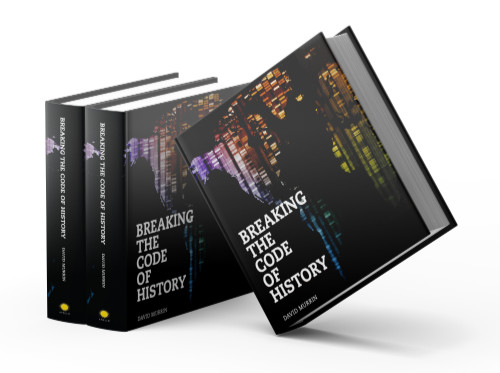
In addition to the Five Stages of Empire, Murrin developed additional theories to explain human collective behaviours:
- Polarisation and the Road to War described the path to the outbreak of wars and explained wars of expansion.
- The K wave Commodity Cycle explained the link between Kondratieff commodity cycles and increased competition for resources that catalysed wars.
- The theory of warfare described the very nature of human warfare as the conclusion of strategic competition, in which the position of each combatant on the cycle of empire defines the nature of how a war is fought, its duration and how it is won.
- Using the Theory of Pandemics and Cycles he predicted, back in 2010, that the next global pandemic would come from a PLAN weapons laboratory as an asymmetric weapon. He went further to predict that the impact of such a pandemic would be far greater on the Western Christian Super Empire, which was in a stage of later decline, than on the rising Asian countries of the Asian Super Empire, such as China.
Based on research into 800,000 years of the behaviour of ice cores, Murrin predicted that the rate of climate change was far more pronounced than recognised (due to the rigidness of an old and declining empire system). Additionally, he predicted that due to the hegemonic challenge between America and China, climate change would not be addressed in a meaningful way until after the K-cycle peak in 2027, because of the magnitude of the risk of WW3. And even then, it would only be addressed when the danger was clear and present and was threatening human civilisation.
Time has endorsed the theories within Breaking the Code of History, and allowed Murrin to further explore why and how humans create empires in the first place. He created two new theories to explain the underlying driving forces behind humans’ social structures:
- the theory of Human Collective Systems
- the theory of Anti-Entropy in Human Systems
Not only do these theories explain why humans create social structures as survival mechanisms, but also the unconscious limitations of our current strategy for evolution, which we must now evolve beyond.
Other books
Murrin’s second book, Lions Led By Lions, was released in 2018. It examines Britain’s misunderstood involvement in the First World War and the learning curve of the British Army's leadership, which resulted in a war-winning British Expeditionary Force rolling back the German Army in 1918. The story provides clear lessons that should be applied by today's leaders concerning the deterrence of global conflict, and has been adopted as a text reference at the Defence Academy of the United Kingdom, where Murrin has been a guest lecturer on the Higher Command and Staff Course.
His third book, Now Or Never, was released in 2021. It was a call to arms, highlighting the clear and present threats faced by Britain in the years and decades ahead, from Russia and especially China, and the urgent need for large-scale rearmament to secure future peace.
His latest book, Red Lightning, also published in 2021, integrated fact and fiction and describes from a future perspective how China wins WW3 in 2025. It is a sober warning to the leaders of the Western world that peace will only be maintained by a hard-won deterrence of aggression.
Views and Key Messages
Murrin believes humankind is approaching a watershed moment. Geopolitical instability sliding into global conflict, global warming, pandemics and dwindling natural resources all pose a threat to humanity and society as we know it. This next decade will be critical for society’s survival.
He argues that the same specific patterns that we use to survive and prosper also cause us to make the same destructive choices over and over again. To survive, we must identify the patterns that underpin historical cycles, learn the lessons and apply them to today’s changing world. Understanding the ebb and flow of empires throughout history enables us to pinpoint the mechanisms that cause civilizations to rise and fall and identify the points of conflict.
He believes that once we break the code, we can come to a new awareness, which will inform our future decisions. Armed with this knowledge, we will be in a position not only to examine our geopolitical present with precision but also to make predictions about our future and create new, more positive outcomes.
Murrin summarises his key aims as:
- To share his predictive theories with the world, to explain how we have collectively and unconsciously behaved up to this point, and to explain where we will inevitably go if we continue to follow such behavioural habits.
- To empower others to see the world within a more realistic and predictive construct.
- To warn of the dangers ahead, in what he calls the ‘decade of consciousness or catastrophe’.
- To act as a form of self-help for humanity, enabling us to survive and evolve by choosing more constructive decision-making processes.
- To warn the liberal Western world that the autocratic Chinese Communist Party would seek to dominate and erase its very existence within a matter of two decades.
Breaking the Code of History has become increasingly popular since it was first published in 2010. Murrin says this is because it has effectively predicted all that has unfolded since it was published, giving its projections and warnings for the coming decade even more validity.
Thought Leadership Campaigns

Adaptation Through Lateral Lateralisation
In this campaign, Murrin urges government, military and business leaders to adapt to the coming threats by replacing linear-thinking advisors with lateral thinkers, including high-IQ dyslexics, as the most extreme of lateral thinkers and pattern identifiers.
The Confront China campaign
Murrin urges people to ‘act for peace with your wallet’ by choosing not to buy Chinese products, and to reach out to politicians to support the doubling of defence spending and emergency building programmes. He also calls for strong, strategic and bold leadership, and a modernised version of McCarthyism to ‘root out Covert Chinese influence’ within Western societies.
Vision Global Britain 2025
Murrin seeks to harness the post-Brexit national energy for future growth and prosperity. Elements of the campaign include the radical expansion of the UK’s armed forces, increased energy and food self-sufficiency, and swift and decisive reform of government departments, particularly the MoD and NHS.
Climate Change
In this campaign, Murrin argues that catastrophe is only a decade or two away, not the centuries that many would like to think. He calls for significant levels of extraction of Co2 and methane from the atmosphere, incentives for new methods of carbon sequestration, building a hydrogen economy, and increased investment in wind, solar and nuclear power.
Other publications
Murrin is a regular contributor to Warships magazine, with articles including The hypersonic missile challenge (2023), Warship revolutions: Time for the new Dominator class cruisers (2002), Upscaled warship building is needed to safeguard ‘Global Britain’ (2021), US struggle to keep Chinese at arm’s length (2019) and New arms race sees China waking up to its power (2019)
He has also written for other publications including:
Breaking the Code of History (2022) for Cycles Magazine
We need to bring Russia back into the fold (2019), for Property Chronicle
Is it time for us to cash in our chips? (2019) for Family Capital
Head to head (2013) for Investsa.
Murrin is the subject of chapter 3 of Geoff Cutmore’s book New Market Mavericks, entitled David Murrin: Trading the Roadmap.
He has been interviewed for several podcasts, including:
The US and Europe are in a terminal state of decline (2023) and War, inflation and deglobalisation (2023), Palisades Gold Radio
Q and A with David Murrin (2023), Land Cycle Investor
Short the long, long the visionary (2022) Southbank Investment Research
The James Delingpole Podcast
Applying the code of history to create actionable strategies for the future (2023) and The Ukraine War, Russia’s Motives and China’s Strategy (2023) AdzCast
Breaking the spell of denial (2023), The Barefoot Mediator
Moneyweb
Murrin also has his own podcast, with his son Winston, called The State of It:
Pacific Navies: Australia, Japan and Taiwan (2023)
Pacific Navies: Comparing the Naval Power of America and China (2023)
Ukraine: An Update on the War (2023)
Press coverage:
Beware of ‘Trap Door’ for stocks, CNBC (2012)
Hedge fund couple split businesses after separation, Reuters (2011)
Names You Need to Know, Forbes (2011)
The Western World is ‘Finished Financially’, CNBC (2011)
Short the West, Forbes (2009)
Personal life
While at JP Morgan, Murrin met Susan Payne in 1986 and they remained partnered (but not married) until 2010. They have two sons and one daughter.
Hobbies
Murrin has for four decades been a keen racing yachtsman, owning Cetewayo since 1989. He was the Royal Ocean Racing Club overall winner in 1998, and has won at British Classic Yacht Club week and numerous other regattas. David also co-founded the British Classic Yacht Club in 2001, serving as Vice Commodore for eight years and then Commodore for the next nine years, writing The Commodore’s Log for Classic Boat magazine. He also owned the Farr 40 2XL between 1999 and 2006, winning a national championship and Cork Week IRM.
He is a keen kite surfer and model maker. He has also been a student of Asian philosophy and martial arts since his youth, starting with Japanese martial arts and then spending decades studying Tai chi under Rose Li and Quincy Rabot.


